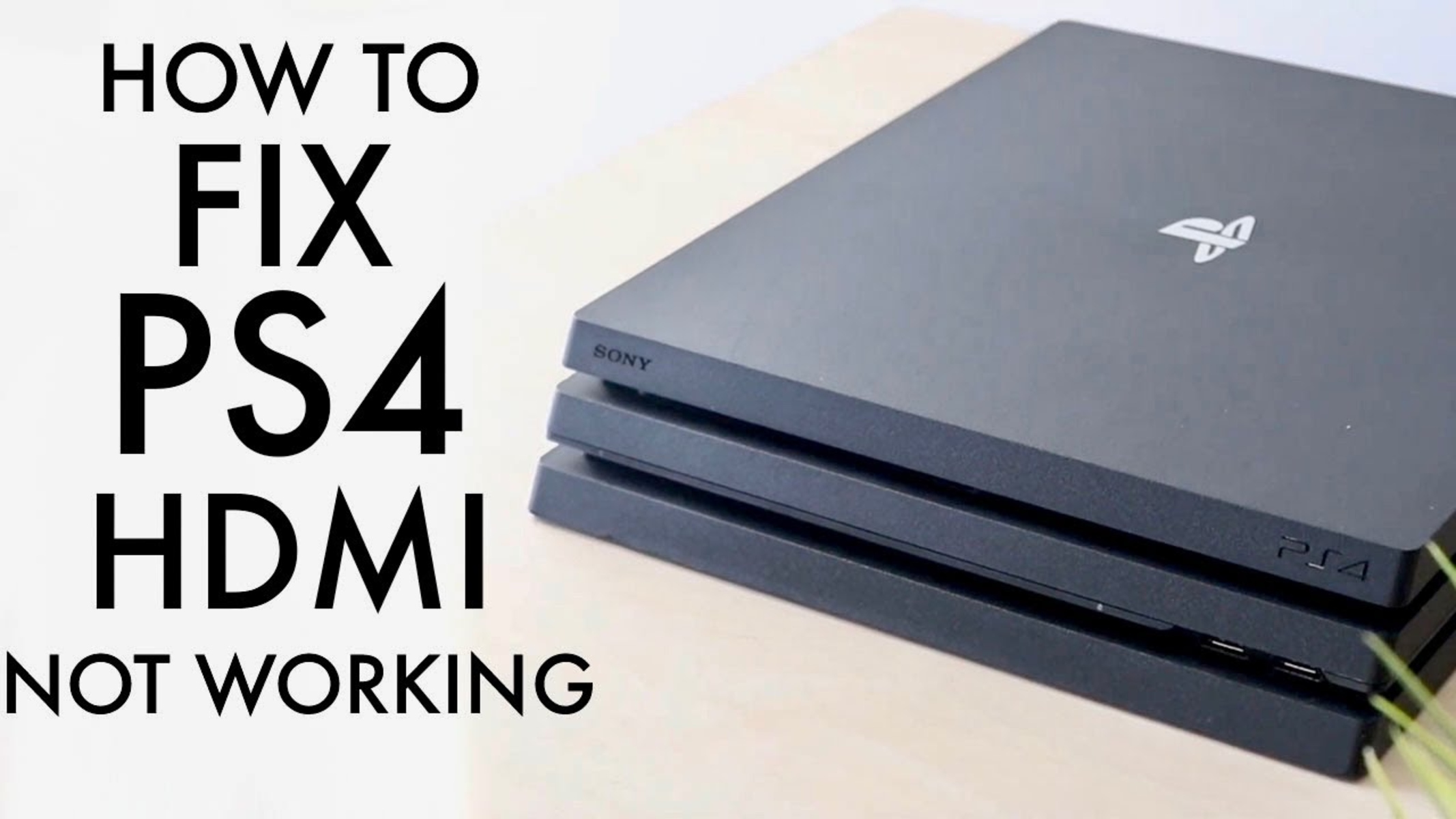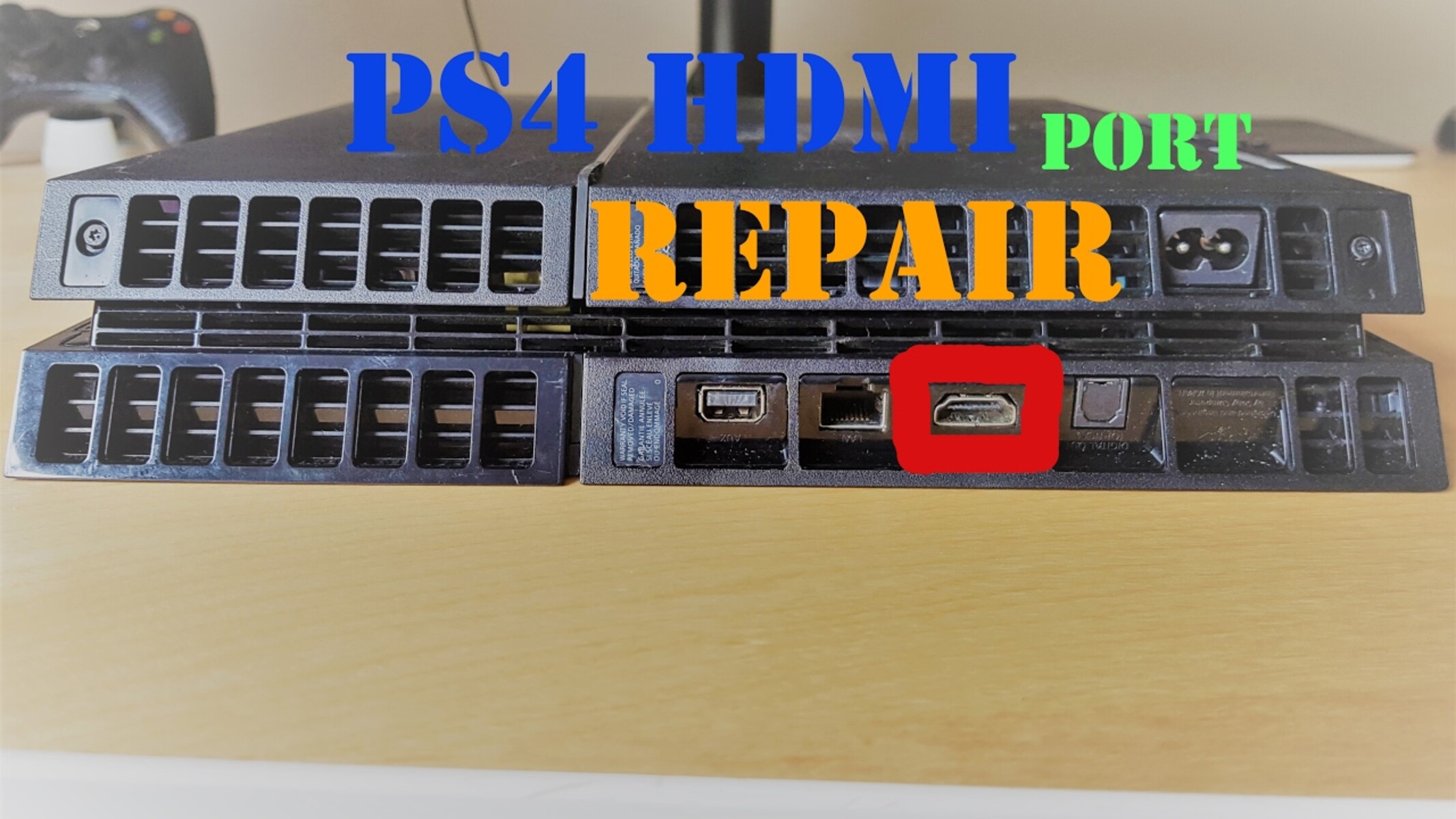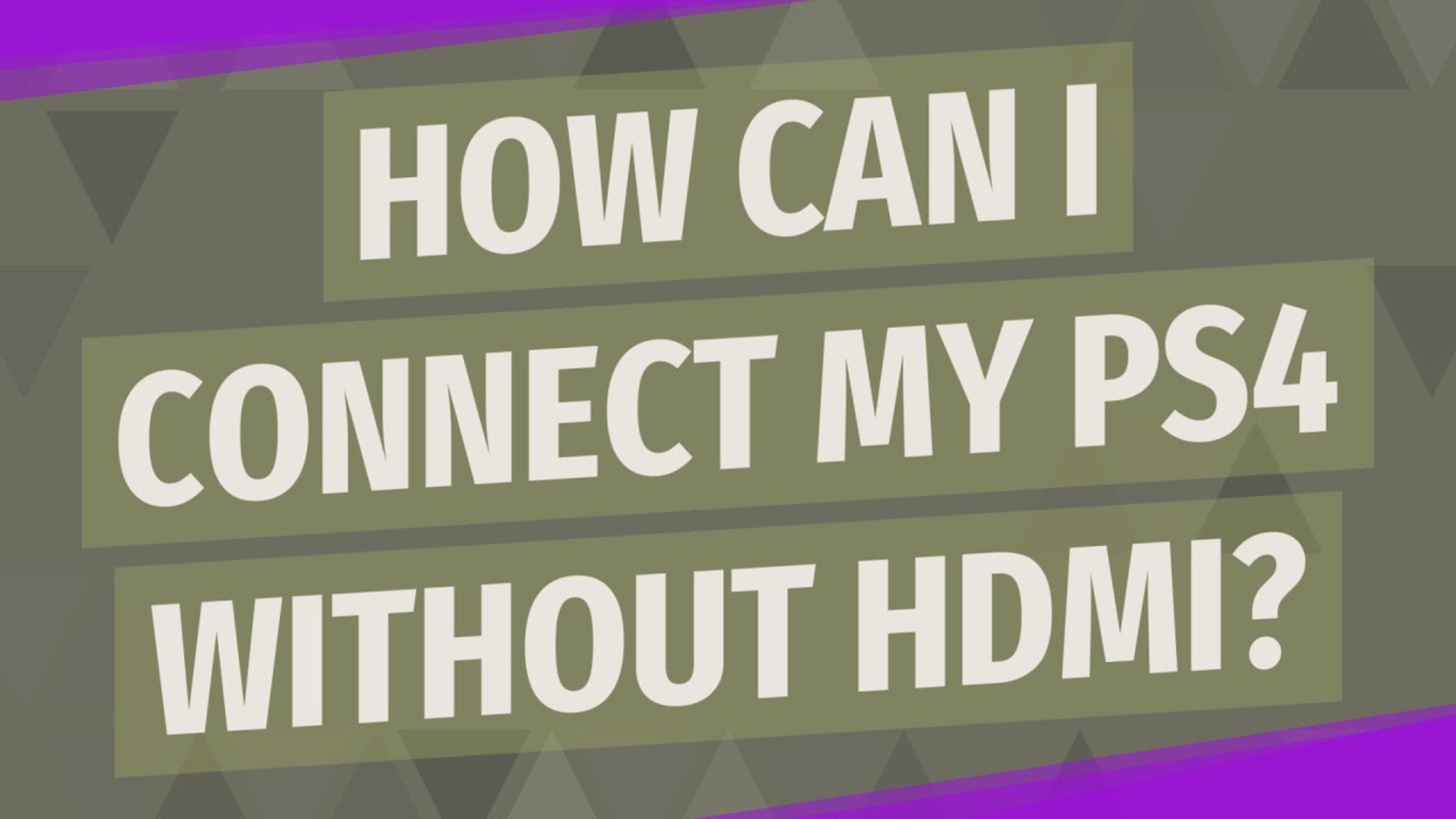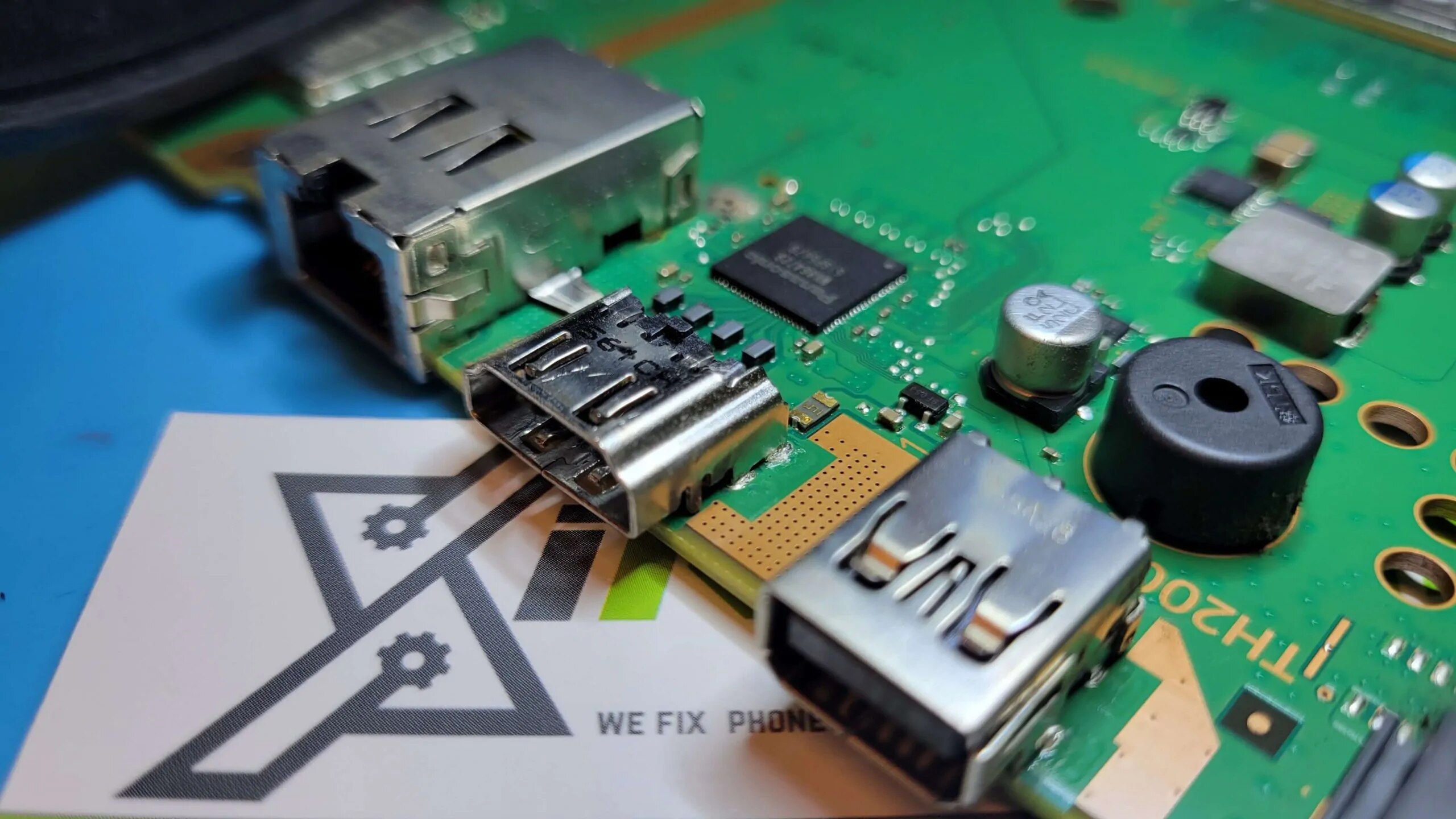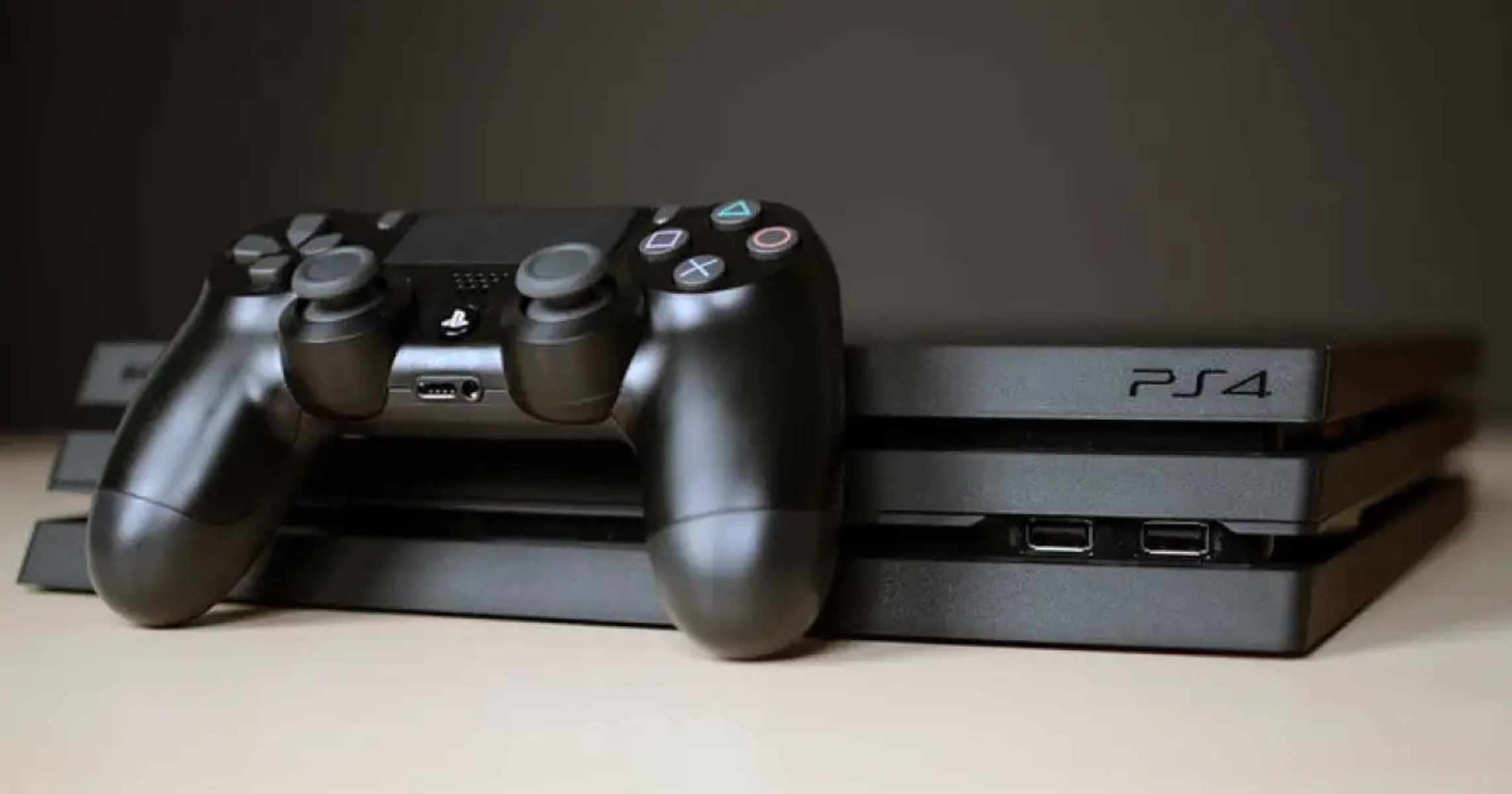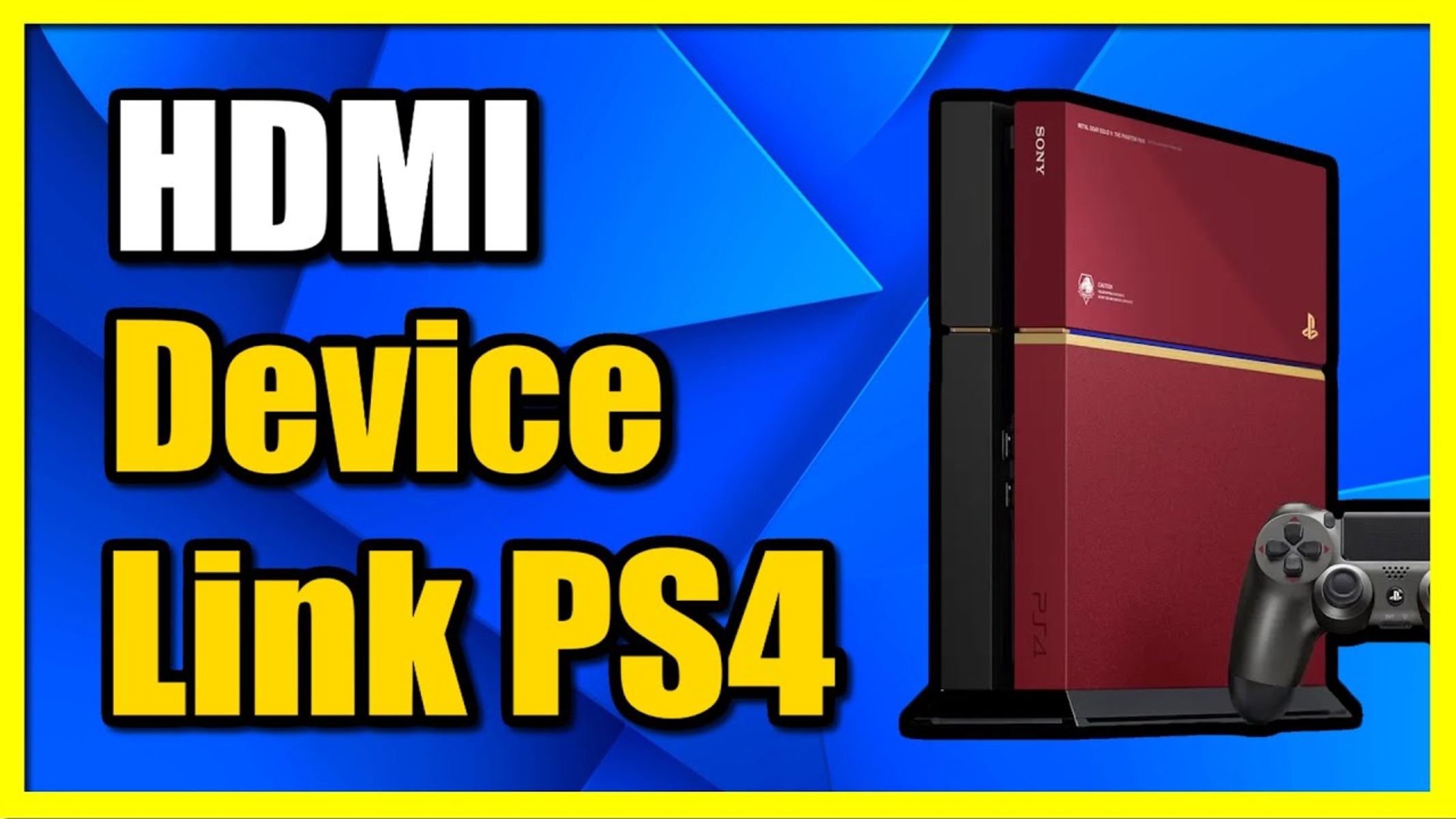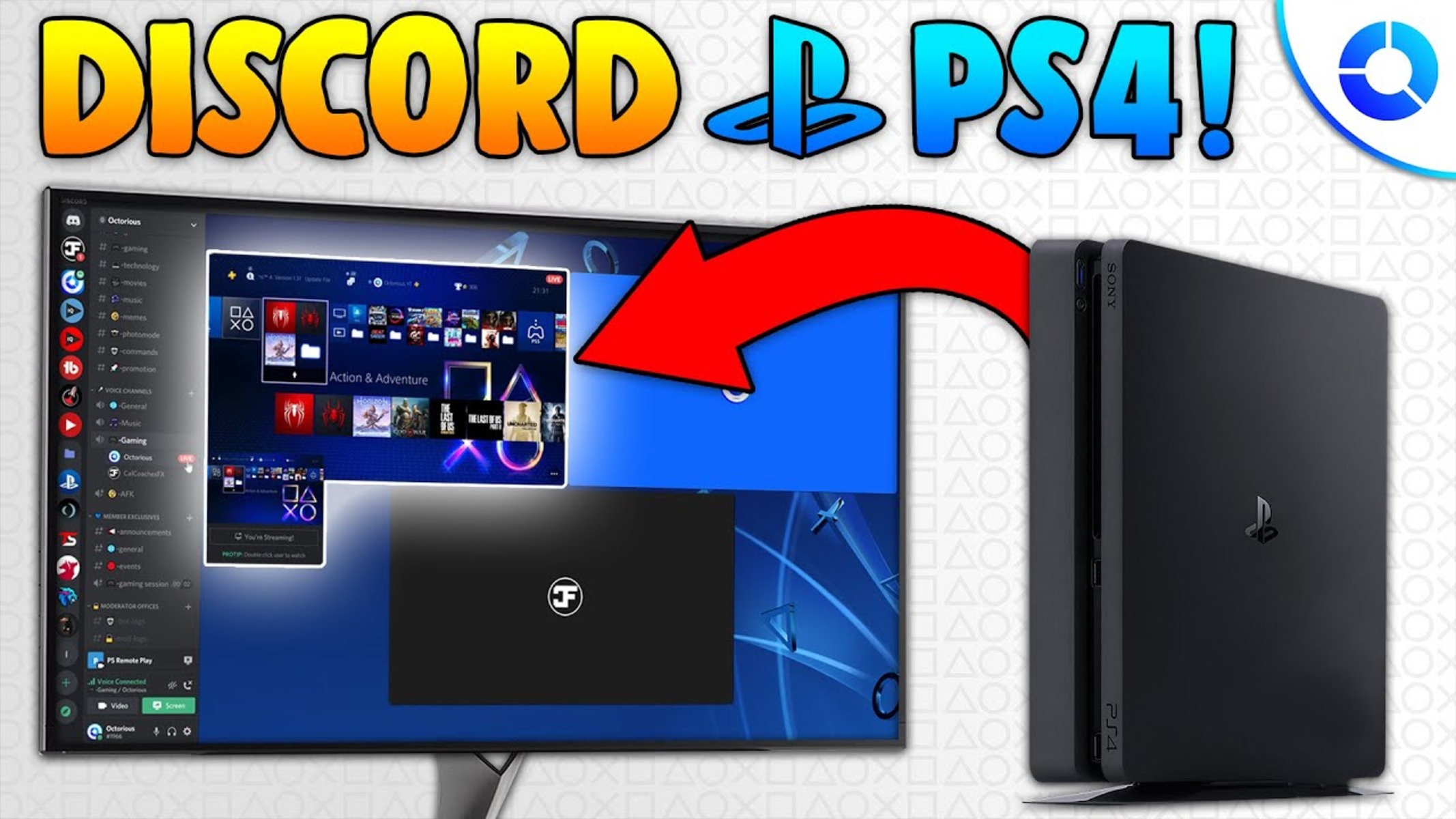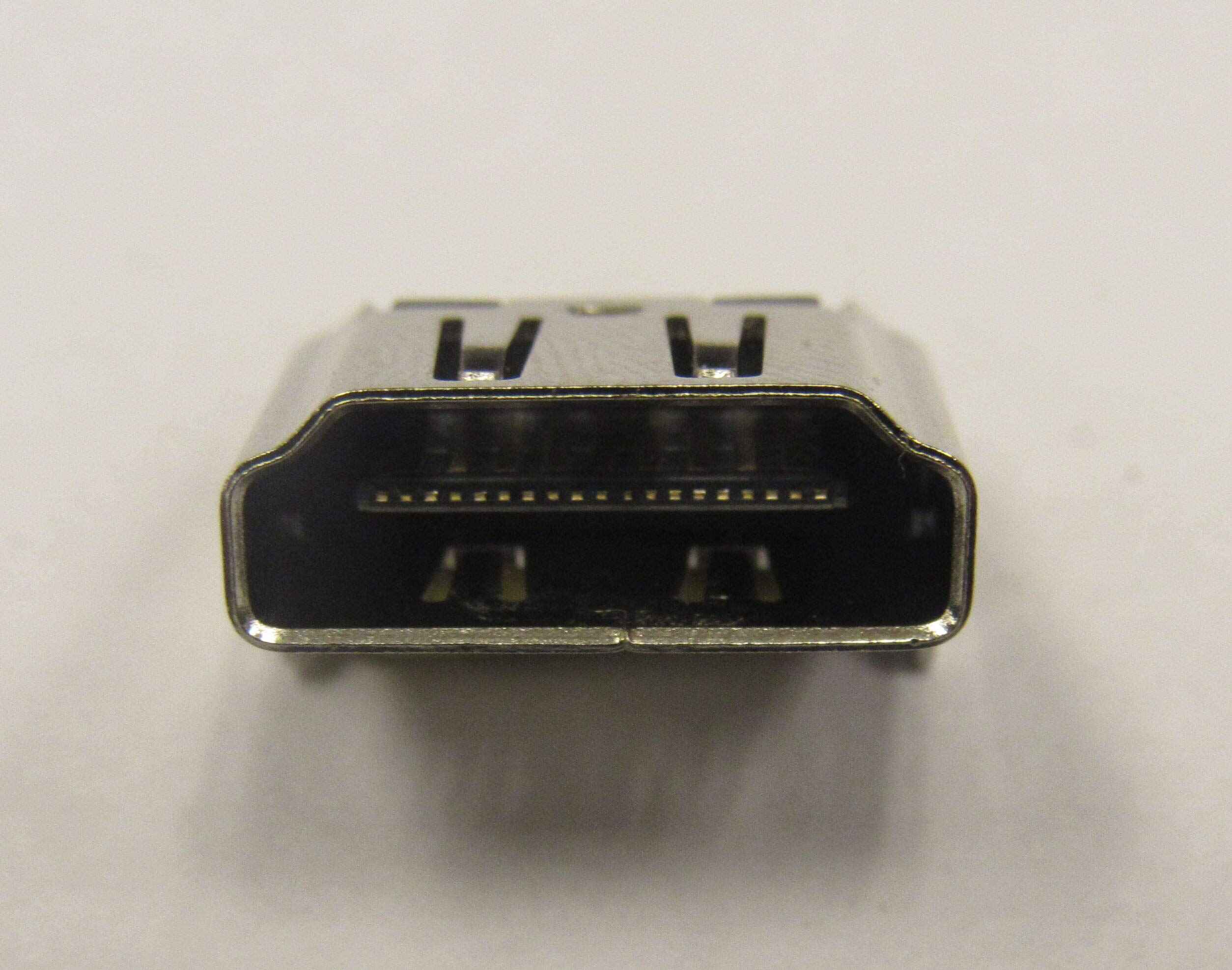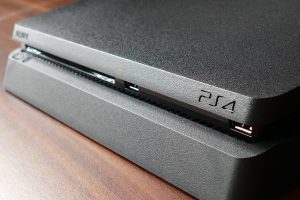Introduction
Have you ever encountered the frustrating dilemma of your HDMI not working on your PS4? If so, you are not alone. HDMI issues are a common problem that many PS4 owners face, and they can be a real headache when you’re trying to enjoy your favorite games or stream your favorite shows.
Connecting your PS4 to your TV via HDMI is supposed to be a simple and seamless process. But sometimes, things don’t go as planned, and you’re left scratching your head, wondering why you’re not getting any video or audio output. The good news is that most HDMI issues can be easily resolved with a few simple troubleshooting steps.
In this article, we will explore some of the common reasons why your HDMI may not be working on your PS4 and provide you with practical solutions to get your gaming system up and running again. Whether you’re experiencing a blank screen, poor video quality, or no audio, we’ve got you covered.
Before we dive into the troubleshooting steps, it’s important to note that HDMI issues can stem from a variety of factors, ranging from simple connectivity problems to more complex hardware or software issues. By diagnosing the root cause of the problem, you can quickly and effectively resolve the issue and get back to gaming in no time.
So, if you’re ready to unlock the potential of your PS4 and resolve those pesky HDMI issues, let’s dive into the troubleshooting steps and get your gaming experience back on track!
Common HDMI Issues with PS4
When it comes to HDMI issues with your PS4, there are a few common problems that users often encounter. These issues range from no signal or blank screen to poor video quality or audio glitches. Understanding these common problems will help you diagnose the root cause of the issue and find the appropriate solution.
One common issue is the HDMI cable not being plugged in correctly. Sometimes, the cable may be loose or not fully inserted into either the PS4 or the TV. As a result, you may experience a blank screen or intermittent signal. The solution is simple: ensure that the HDMI cable is securely connected to both the PS4 and the TV, and make sure it’s not damaged.
A damaged HDMI port on either the PS4 or the TV can also cause HDMI problems. If the port is loose, bent, or damaged, it can disrupt the signal transmission, leading to issues like no signal or flickering screen. In this case, you may need to replace the HDMI port or seek professional repair.
Another common issue is selecting the wrong input on your TV. Your TV may have multiple HDMI ports, and if the input is set to the wrong one, you won’t see any video output from your PS4. Check the input settings on your TV and make sure it matches the HDMI port you’re using.
The resolution output of your PS4 can also cause HDMI issues. If the PS4 is set to a resolution that is not supported by your TV, it can result in a blank screen or distorted video. To fix this, you can force the PS4 to use a lower resolution or try connecting to a different TV to determine if the issue lies with the resolution compatibility.
If you’re using an HDMI switcher or receiver in your setup, it’s important to ensure that it is functioning properly. Faulty or outdated switchers or receivers can hinder the HDMI signal transmission and disrupt the connection between your PS4 and the TV. Try connecting the PS4 directly to the TV to rule out any issues with the switcher or receiver.
Software updates play a crucial role in ensuring system compatibility and performance. If your PS4 is not running the latest firmware version, it could potentially cause HDMI issues. Check for system software updates and install them accordingly to fix any bugs or compatibility issues that may be affecting the HDMI functionality.
HDCP (High-bandwidth Digital Content Protection) issues can also cause HDMI problems. Some TVs or HDMI devices have HDCP requirements that need to be met. If your TV or HDMI device does not support HDCP or if the HDMI cable itself is not HDCP-compliant, it can lead to a loss of signal or limited functionality.
In rare cases, the HDMI output on your PS4 may be faulty. This could be due to internal hardware issues or a damaged HDMI port on the console itself. If none of the previous troubleshooting steps have resolved your HDMI problem, you may need to contact Sony’s support for further assistance or consider repairing or replacing the HDMI output port.
By understanding these common HDMI issues with the PS4 and the potential causes behind them, you can now begin troubleshooting and resolve the problem effectively. Let’s move on to the next section and explore the step-by-step solutions to these issues.
Is the HDMI Cable Plugged In Correctly?
One of the most basic and common reasons why your HDMI may not be working on your PS4 is due to the cable not being plugged in correctly. It may seem obvious, but sometimes a loose or improperly connected cable can cause frustrating HDMI issues.
To ensure that the HDMI cable is plugged in correctly, follow these steps:
- Make sure both ends of the HDMI cable are securely connected. Check the HDMI ports on both your PS4 and your TV to ensure that the cable is inserted properly. It should fit snugly into the ports without any wobbling or looseness.
- Inspect the HDMI cable for any signs of damage. Look for frayed edges, bent pins, or other physical defects that could affect the quality of the connection. If you notice any damage, it’s advisable to replace the cable with a new one to ensure an optimal connection.
- If you have other HDMI devices connected to your TV, verify that the cable is connected to the correct HDMI input. Sometimes, multiple HDMI ports on the TV can lead to confusion, resulting in a lack of signal or incorrect display.
- Try disconnecting and reconnecting the HDMI cable. Sometimes, simply unplugging the cable from both the PS4 and the TV and plugging it back in can solve any temporary connection issues that may have occurred.
After performing these steps, turn on your PS4 and check if the HDMI connection is working properly. If the issue persists, move on to the next troubleshooting step.
Is the HDMI Port Damaged?
If your HDMI cable is plugged in correctly and you’re still experiencing issues, it’s possible that the HDMI port on either your PS4 or your TV is damaged. A damaged HDMI port can disrupt the signal transmission, leading to problems like no signal, intermittent video, or distorted display.
To determine if the HDMI port is the culprit, follow these steps:
- Inspect the HDMI port on your PS4. Look for any physical damage, such as bent pins, debris inside the port, or signs of corrosion. If you notice any abnormalities, it’s indicative of a damaged port that may need professional repair or replacement.
- Similarly, examine the HDMI port on your TV. Ensure that there are no visible signs of damage or obstructions that could hinder the connection. Clean the port gently with compressed air or a soft brush to remove any dust or debris that may be affecting the signal quality.
- Consider testing different HDMI ports on your TV. If your TV has multiple HDMI ports, switch to a different port and connect your PS4. This will help determine if the issue lies with a specific HDMI port on the TV or if it’s a more general problem.
If you suspect that the HDMI port on your PS4 or TV is damaged, it’s advisable to seek professional assistance or contact the manufacturer for support. They can provide guidance on repair options or suggest further troubleshooting steps.
In some cases, if the damage is severe or if the HDMI port is embedded in the motherboard of the device, it may require a replacement part or a hardware repair. Keep in mind that attempting to repair the HDMI port yourself without proper knowledge and experience could lead to further damage.
By examining the HDMI port on both your PS4 and your TV and conducting some basic troubleshooting, you can diagnose whether a damaged HDMI port is the cause of your HDMI issues. If the problem persists, continue to the next section to explore other possible solutions.
Is Your TV Set to the Right Input?
Another common reason why your HDMI may not be working on your PS4 is if your TV is not set to the correct input. Many TVs have multiple input sources, such as HDMI1, HDMI2, AV, or Component. If your TV is set to the wrong input source, you won’t see any video output from your PS4.
To ensure your TV is set to the right input, follow these steps:
- Check the remote control or the buttons on your TV to locate the input/source button. This button is typically labeled as “Input,” “Source,” or includes an icon representing different input sources.
- Press the input/source button to cycle through the available input sources on your TV. Look for the input source corresponding to the HDMI port that your PS4 is connected to. It may be labeled as HDMI1, HDMI2, or something similar.
- Once you’ve selected the correct input/source, wait a few seconds for the TV to recognize the signal from your PS4. You should now see the video output from your PS4 on your TV screen.
- If you’re unable to find the correct HDMI input on your TV, try connecting the HDMI cable to a different HDMI port and repeat the steps above. This will help determine if the issue lies with a specific HDMI port on your TV.
- Some newer TVs have a feature called “HDMI-CEC” or “HDMI Control” that allows the connected devices to communicate with each other. Make sure this feature is enabled on both your TV and your PS4 to ensure seamless HDMI functionality.
By ensuring that your TV is set to the correct HDMI input, you can eliminate any confusion or misconfiguration that may be causing the HDMI issues with your PS4. If the problem persists, proceed to the next troubleshooting step.
Is Your PS4 Outputting the Correct Resolution?
If you’re experiencing HDMI issues with your PS4, it’s worth checking if your console is outputting the correct resolution. A mismatch in resolution settings between your PS4 and your TV can result in a blank screen, distorted video, or poor display quality.
To ensure that your PS4 is outputting the correct resolution, follow these steps:
- On your PS4 home screen, go to the “Settings” menu.
- Select “Sound and Screen,” then choose “Video Output Settings.”
- In the “Video Output Settings” menu, you’ll see options for resolution, RGB range, and HDR. Select the “Resolution” option.
- Check the available resolution options and choose the one that matches the capabilities of your TV. If you’re unsure of your TV’s supported resolutions, consult the TV’s user manual or manufacturer’s website.
- After selecting the appropriate resolution, confirm your selection and allow the PS4 to apply the new settings.
- Once the resolution is adjusted, check if the HDMI connection is now functioning properly.
If the resolution was previously set to a value that is not supported by your TV, changing it to a compatible resolution should resolve any display issues. However, keep in mind that lowering the resolution may result in a reduction in video quality. If the issue persists, you may need to try connecting your PS4 to a different TV or consult the manufacturer for further assistance.
It’s important to note that some games or video content may have their own resolution settings. Verify if individual games or streaming apps have custom resolution settings and adjust them accordingly to ensure optimal compatibility with your TV.
By confirming that your PS4 is outputting the correct resolution for your TV, you can eliminate any mismatched settings that may be causing the HDMI issues. If the problem persists, proceed to the next troubleshooting step.
Is there a Problem with the HDMI Switcher or Receiver?
If you’re using an HDMI switcher or receiver in your setup, it’s essential to determine if there’s a problem with the device that may be causing HDMI issues with your PS4. Faulty or outdated switchers or receivers can disrupt the HDMI signal transmission, leading to a loss of video or audio.
To identify if the HDMI switcher or receiver is the source of the problem, follow these steps:
- Ensure that the HDMI switcher or receiver is powered on and connected correctly. Check the power cable and make sure it’s securely plugged in, and the device is receiving power.
- Inspect the HDMI cables connecting your PS4, switcher/receiver, and the TV. Look for any signs of damage or loose connections. Replace any damaged cables and ensure that they are securely plugged into the respective HDMI ports.
- If you have other HDMI devices connected to the switcher/receiver, ensure they are powered on and properly connected. A faulty or incompatible HDMI device could be interfering with the signal transmission.
- Try bypassing the HDMI switcher or receiver and connect your PS4 directly to the TV using a single HDMI cable. This will help identify if the switcher or receiver is causing the HDMI issues. If the problem is resolved when excluding the switcher or receiver from the setup, it may be necessary to replace or repair the device.
- If the HDMI switcher or receiver has firmware or software, check if there are any available updates. Outdated firmware can sometimes cause compatibility issues and disrupt the HDMI connection.
By following these steps, you can determine if there’s a problem with the HDMI switcher or receiver that’s impacting the connection between your PS4 and your TV. If the issue persists even after bypassing the switcher or receiver or updating the firmware, consider contacting the manufacturer for further support or exploring alternative switcher/receiver options.
Keep in mind that using a high-quality HDMI switcher or receiver from reputable brands can help prevent HDMI signal degradation or compatibility issues, ensuring a smooth and reliable connection between your PS4 and your TV.
Are There Any System Software Updates?
System software updates are essential for the proper functioning of your PS4 and can often address various issues, including HDMI-related problems. If you’re experiencing HDMI issues with your PS4, it’s crucial to check for any available system software updates.
To determine if there are any system software updates for your PS4, follow these steps:
- On your PS4 home screen, navigate to the “Settings” menu.
- Select the “System Software Update” option.
- Choose the “Check for Update” option and wait for the PS4 to check for any available updates.
- If an update is available, follow the on-screen prompts to download and install the update on your PS4.
System software updates often include bug fixes, performance improvements, and compatibility enhancements. By keeping your PS4 up to date, you can ensure that you have the latest fixes and optimizations for HDMI-related issues.
After installing the update, test the HDMI connection again to see if the issues have been resolved. Sometimes, a software update can address compatibility issues or bugs that were affecting the HDMI functionality.
If your PS4 already has the latest system software version installed, and you’re still experiencing HDMI issues, it’s possible that the problem lies elsewhere. In such cases, proceed to the next troubleshooting step to explore other potential solutions.
It’s good practice to regularly check for system software updates to ensure that your PS4 is running optimally and has the latest features and fixes. This can help prevent and resolve various issues, including HDMI-related problems.
Are there HDCP Issues?
HDCP (High-bandwidth Digital Content Protection) is a copy protection technology that ensures that copyrighted content is securely transmitted over HDMI connections. HDCP can sometimes cause issues with HDMI connections, leading to problems like a blank screen or intermittent signal loss.
To check if HDCP is causing the HDMI issues with your PS4, consider the following:
- Verify if your TV or HDMI device supports HDCP. Most modern TVs and HDMI devices are HDCP-compatible, but it’s essential to ensure that your specific model supports this technology. Check the user manual or manufacturer’s website for information on HDCP compatibility.
- Make sure your HDMI cable is HDCP-compliant. Some cheaper or older HDMI cables may not support HDCP, leading to compatibility issues. Look for HDMI cables that are labeled as HDCP-compliant or High Speed HDMI cables.
- Try using a different HDMI cable. If you suspect that your current HDMI cable may be the cause of HDCP issues, try using a different cable to see if the problem persists. A faulty or incompatible HDMI cable can disrupt the HDCP handshake and result in a loss of signal.
- Temporarily disable HDCP on your PS4. Go to the “Settings” menu on your PS4, select “System,” then “Enable HDCP.” Disable HDCP and check if the HDMI issues are resolved. Note that disabling HDCP may prevent the playback of certain copyrighted content that requires HDCP protection.
If disabling HDCP resolves the HDMI issues, it’s likely that the HDCP implementation on either your TV or your PS4 is causing the problem. In such cases, try updating the firmware of your TV or contacting the manufacturer for further assistance or potential fixes.
It’s worth noting that HDCP is an integral part of copyright protection and is required for the secure transmission of certain content. Disabling HDCP should only be a temporary troubleshooting step and may limit your ability to stream protected content in the future.
By checking for HDCP compatibility, using HDCP-compliant HDMI cables, and temporarily disabling HDCP if necessary, you can determine if HDCP is the cause of the HDMI issues with your PS4. If the problem persists, proceed to the next troubleshooting step to explore further solutions.
Is the PS4 HDMI Output Faulty?
If you’ve exhausted all other troubleshooting steps and are still experiencing HDMI issues with your PS4, it’s possible that the HDMI output on your console is faulty. Internal hardware issues or a damaged HDMI port can disrupt the signal transmission and result in a lack of video or audio output.
To determine if the PS4 HDMI output is the source of the problem, consider the following:
- Inspect the HDMI port on your PS4 for any signs of physical damage. Look for bent pins, debris, or corrosion that may be hindering the connection.
- If possible, try connecting your PS4 to a different TV or monitor using a known-working HDMI cable. This will help determine if the issue lies with the HDMI output or the original TV. If you get a proper signal on the alternative display, it indicates that the HDMI output on your PS4 is functioning correctly.
- Perform a power cycle on your PS4 by fully shutting it down, disconnecting the power cord, and waiting for a few minutes before reconnecting and powering it back on. Sometimes, power-related issues can cause HDMI problems, and a power cycle can help reset any temporary glitches.
- If the HDMI issues persist even with a different TV or monitor, it’s advisable to contact Sony’s support or consult a professional technician for further assistance. They can provide guidance on potential repairs or suggest alternative solutions.
It’s important to note that attempting to repair the HDMI output on your PS4 yourself, especially if you’re not experienced with hardware repairs, can cause further damage. It’s best to seek professional assistance to avoid compromising the functionality of your console.
By inspecting the HDMI port, testing the PS4 with a different display, performing a power cycle, and seeking professional support when needed, you can determine if the HDMI output on your PS4 is faulty. Taking these steps will help you identify the root cause of the issue and explore appropriate solutions for resolving the HDMI problems.
Conclusion
HDMI issues can be frustrating and disrupt your gaming or entertainment experience on your PS4. However, by following the troubleshooting steps outlined in this article, you can effectively diagnose and resolve the common HDMI problems you may encounter.
We started by ensuring that the HDMI cable is plugged in correctly and inspecting for any damage. We then moved on to checking the HDMI port for any issues on both the PS4 and the TV. Verifying that the TV is set to the correct HDMI input and that the PS4 is outputting the correct resolution are important steps in troubleshooting HDMI problems.
If you’re using an HDMI switcher or receiver, we explored the potential issues with those devices and how to work through them. Checking for any available system software updates is another crucial step in addressing HDMI issues, as well as verifying if HDCP is causing any problems with the connection.
Finally, in cases where all other troubleshooting steps have failed, we discussed the possibility of a faulty HDMI output on the PS4 itself, which may require professional repair or assistance from Sony’s support.
Remember, each situation may be unique, and multiple factors can contribute to HDMI issues. It’s important to be patient and methodical in your troubleshooting process, ruling out each potential cause before moving on to the next step.
If you’re unable to resolve the HDMI issues on your own, don’t hesitate to reach out to the manufacturer’s support or consult a professional technician for further assistance. They can provide specialized guidance and help you find a solution specific to your situation.
By following these troubleshooting steps and seeking the necessary support when needed, you’ll be able to overcome HDMI issues and enjoy seamless connectivity and high-quality visuals on your PS4 once again.







